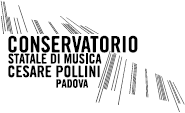Padova and its surroundings
Probably better known as the city of St. Anthony or as the economic capital of Veneto, Padova (Padua) is also one of the most important art cities in Italy. The artistic scene was dominated by Giotto, whose masterpiece is the decoration of the Scrovegni Chapel (1303-1305), and by his followers, Guariento, Altichiero, Giusto de' Menabuoi, and later by Andrea Mantegna and Donatello.
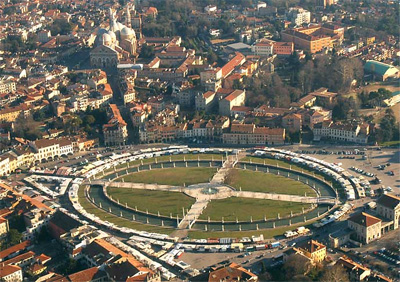
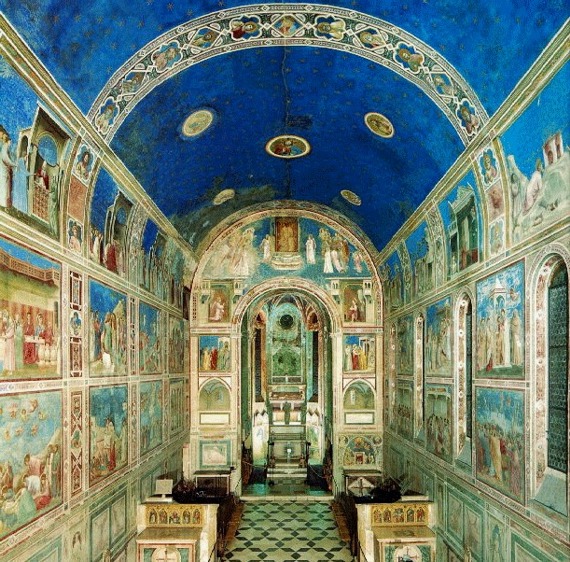
The most important monuments of the town were realized between the 13th and the 15th century, the most extraordinary economic and cultural period, that left an indelible mark on the town: the medieval city walls, the great civil and religious buildings, the university.
The gastronomic tradition of Padova takes its roots from the simple and genuine products of the garden, of the courtyard and of the vineyards.
The region of Italy where Padova is located is know as Veneto. The surroundings of Padova offer to the visitor the scenario of the Euganean Hills, in the natural park of Colli Euganei, rich of natural and historical attractions such as medieval towns, villas and thermal resorts, framed in a wonderful natural landscape offering a lot of walking and cycling opportunities.
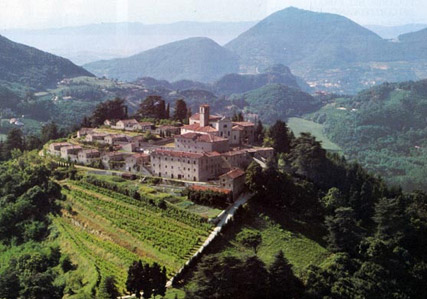
Poet Francesco Petrarca (Arezzo, Italy 1304; Arqua' Petrarca, Italy 1374) chose the Euganean Hills to spend the last period of his life, in Arqua' Petrarca, where his house can still be visited nowadays.
Wine is a typical product of the Euganean Hills and the visitor can find itineraries which combine a wonderful natural and artistic landscape with the taste of wine and other gastronomic products. See for example the wine road Strada dei Vini D.O.C. dei Colli euganei.
Veneto has been the home not only of Pertarca, but also of other artists such as the famous architect Palladio (Padova, Italy 1508; Vicenza, Italy 1580). Eighteen Renaissance villas by the architect Andrea Palladio survive today in the Veneto area. Many of them are open to the public. They are visited each year by thousands of architects, art historians, tourists and people who want to admire their beauty. Also, the main cities of Veneto, rich of historical and artistical attractions, are just few kilometers far from Padova.
Venezia
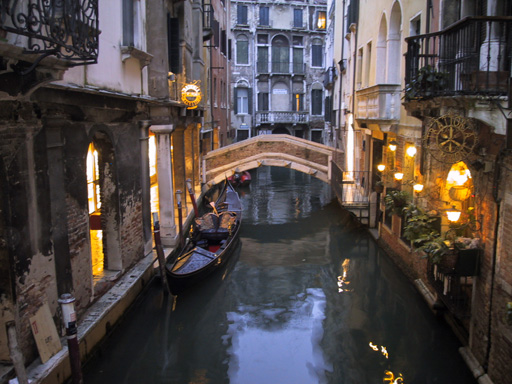
Venezia (Venice) is one of the few cities in the world that can be truly described as unique.
'As sailors and merchants, town-builders and politicians, the Venetians were the forerunners and the youth of today's civilization.'
Le Corbusier
'I have never witnessed such an ecstasy of joy as that shown by the audience when they saw themselves and their families so realistically portrayed on the stage. They shouted with laughter from beginning to end.'
Goethe
'When I went to Venice, I discovered that my dream had become -incredibly but quite simply- my address.'
Marcel Proust
'And at night they sang in the gondolas, and in the barche with lanterns; the prows rose silver on silver, taking light in the darkness.'
Ezra Pound
'Here it is S. Marco, the tower, the piazza, Palazzo Ducale. Probably such a jewel doesn't exist anywhere else in the world.'
Hippolyte Taine
'Venice is not only a city of fantasy and freedom. It is also a city of joy and pleasure.'
Peggy Guggenheim
Vicenza
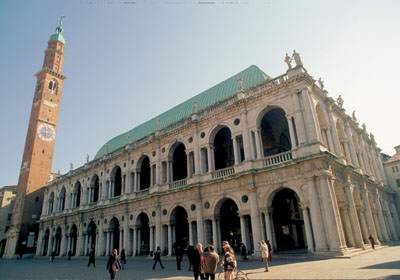
Vicenza, the City of Gold and Andrea Palladio.
An age-old tradition in goldsmith makes Vicenza the world point reference for the area. Vicenza is also an attractive town, bound indissolubly to the aesthetic genius created by Andrea Palladio, the Architect par excellence, who left his town of adoption a precious inheritance of villas and palaces of such extraordinary beauty to make Vicenza deserve the title of UNESCO World Heritage.
Amongst these jewels we can mention the Palladian Basilica, a sort of 16th century 'space-ship' that landed in the heart of the town, the Olimpic Theatre, the only wooden theatre of that period still existing in the world, and the Villa Rotonda, of symbolic beauty.
The morphological and geographical variety of the surroundings of Vicenza is composed by mountains, hills, rivers, lakes and plains, which create a particular fascinating landscape. The Province of Vicenza offers also a wide range of cultural, artistic and historical attractions for tourists, such as the medieval town of Marostica famous for its chess game with living persons dressed in costumes of the sixteenth century.
Verona
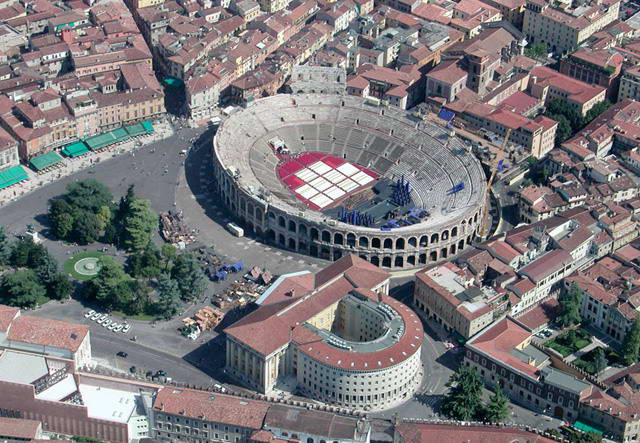
Verona is known worldwide for its Arena. The Amphitheatre in Verona is one of the biggest and undoubtedly the best conserved of the roman monuments. It is better known as the 'Arena', the Latin word for sand, which was used to cover the area where performances took and still take place.
Many other monuments can be found in the centre of town, all within walking distance from each other, that the visitor can easily enjoy in a lot of itineraries.
Also the history of Romeo and Juliet, brought to its celebrity by the Shakespeare's tragedy, took place in Verona and in some castles in the surrounding area. A whole 'Romeo and Juliet itineray' can be enyoyed in the centre of town, going through the house of Giulietta, open to the public, which represents one of the main attractions for oturists coming from all over the world.
Treviso
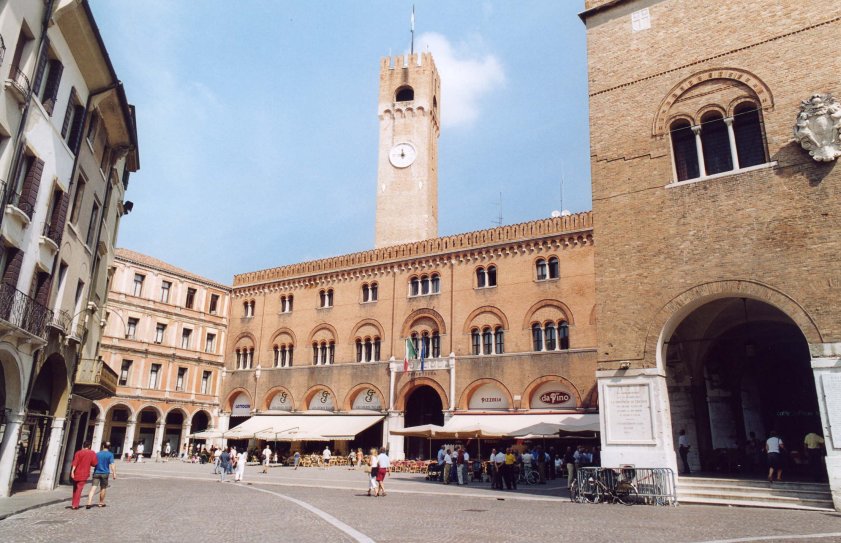
The tourist who chooses Treviso and the Marca Trevigiana for a day trip, a weekend or a longer stay will never be disappointed by its many beautiful sights and interesting itineraries.
The Marca Trevigiana is the birthplace of the painters Cima da Conegliano and Giorgione, of Antonio Canova and, more recently, of Arturo Martini, Guido Rossi and Giovanni Barbisan, who have all left vigorous traces of their presence both on the territory and the museums. Palladio worked here, and here he conceived and built some of his most remarkable villas.
Medieval town, surrounded by sixteenth–century walls, Treviso is an elegant city lying picturesquely at the confluence of the Sile and Botteniga rivers. Long porticoes and frescoed house façades give many of the streets an appearance quite distinct from those of other towns in the region.
The region around Treviso, the Marca, has incomparable ancient towns, walled citadels and villages with typical stone houses, imposing castles, and gentry palaces. This land is rich in valuable cultivations, such as vineyards (white wine in the hills and red wine in the plane) or specialities such as red chicory. The famous hills of the Marca Trevigiana, that go all the way from Asolo to Valdobbiadene and Vittorio Veneto, offer a wide range of leisure activities.
Bassano del Grappa
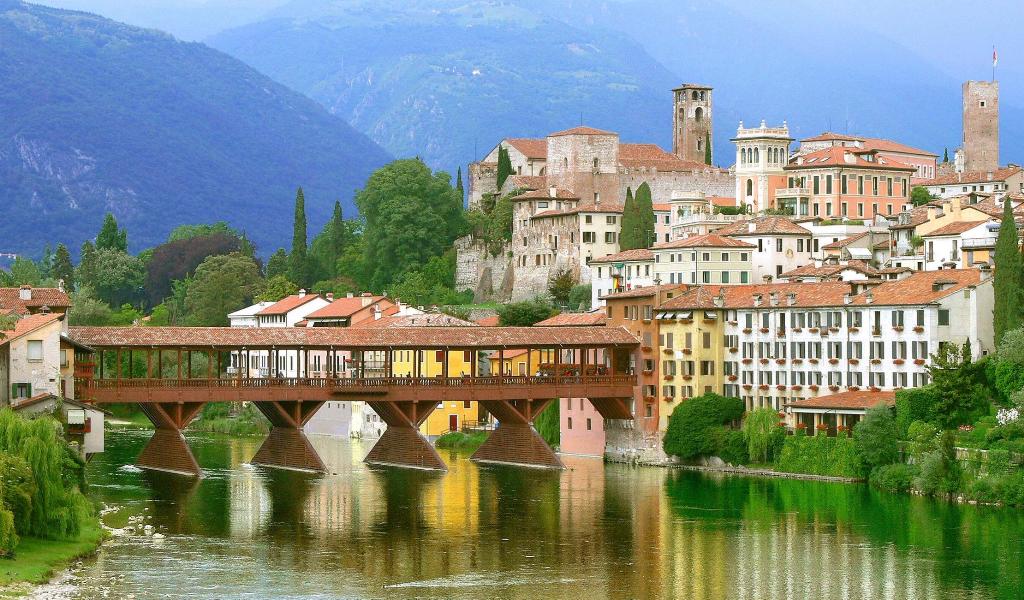
Bassano del Grappa is in the heart of Veneto, north of Vicenza. It is described by tourists as one of the most beautiful Italian villages.
The symbol of the town is the covered wooden pontoon bridge crossing the Brenta river, known as Ponte Vecchio or Ponte degli Alpini, which was designed by the architect Andrea Palladio in 1569. The bridge was destroyed many times, the last time during World War II. The Alpine soldiers, or Alpini, have always revered the wooden bridge and Bassano del Grappa. After the destruction of the bridge, they took up a private collection and had the bridge completely rebuilt. Even today, it is not rare to see soldiers flock to the bridge to remember and sing songs from their days as Alpini.
Bassano is also famous for the spirit 'Grappa'. The most renowned Grappa shop is located right on one end of the bridge.













